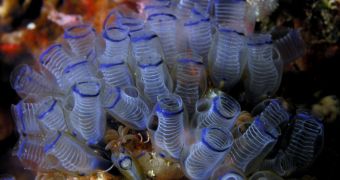It may be possible that the key to preventing aging in humans is held in sea creatures that reproduce asexually, through cloning. Studies are now being conducted on some colony-forming organisms that have been alive for several tens of thousands of years.
One of the most interesting conclusions extracted from these studies thus far is that the enzyme telomerase appears to exist in much more elevated concentrations in these species. Similarly, researches carried out on very old human beings revealed larger amounts of telomerase.
This enzyme is a very special type of protein, whose job is to protect telomeres. These are small caps on the ends of chromosomes, which lose a little bit of their length every time the cell containing them divides. After a while, when telomeres get too short, the host cell dies.
According to University of Gothenburg investigators, colony-forming marine animals called ascidians or sea squirts exhibit a few interesting defense mechanisms that ensure a correct cloning of each individual cell. These security checks basically render the animals immortal.
Speaking in general, there is a very vast difference between the average life spans of species on Earth. While bacteria such as E. coli live less than a day, a turtle can live for one or two centuries, a tree can endure for thousands of years, and deep-sea corals can live for up to 10,000 years or more.
UG Department of Marine Ecology expert Helen Nilsson Sköld, the leader of the new research, says that she and her team decided to investigate sea squirts because the creatures had the most human-like genes of the long-living organisms.
“Animals that clone themselves, in which part of an individual’s body is passes on to the next generations, have particularly interesting conditions related to remaining in good health to persist,” explains Nilsson Sköld, quoted by AlphaGalileo.
“This makes it useful to study these animals in order to understand mechanisms of ageing in humans,” the expert adds. Details of the new work appear online in the scientific journal Biogerontology.
“My research has shown that sea squirts rejuvenate themselves by activating the enzyme telomerase, and in this way extending their chromosomes and protecting their DNA,” the team leader adds.
“They also have a special ability to discard ‘junk’ from their cells. Older parts of the animal are quite simply broken down, and are then partially recycled when new and healthy parts grow out from the adult bodies,” Helen Nilsson Sköld concludes.

 14 DAY TRIAL //
14 DAY TRIAL //